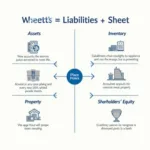TOEIC Reading Practice Test: Corporate Training Edition
Let’s dive into a TOEIC Reading practice test focused on corporate training materials. This test will help you sharpen your skills in understanding business-related texts and vocabulary.
Part 1: Incomplete Sentences
-
The company’s new training program aims to ____ employee productivity and efficiency.
A. enhance
B. diminish
C. neglect
D. overlook -
HR managers are responsible for ____ the training materials to ensure they are up-to-date.
A. updating
B. outdating
C. degrading
D. ignoring -
The comprehensive training manual covers all aspects of the company’s operations and procedures.
A. brief
B. extensive
C. limited
D. narrow -
Employees are required to ____ the online training modules before attending the in-person workshop.
A. complete
B. avoid
C. skip
D. postpone -
The training department is constantly revising the materials to reflect the latest industry trends.
A. rarely
B. occasionally
C. continuously
D. never -
Feedback from participants is ____ to improve the quality of future training sessions.
A. irrelevant
B. crucial
C. unnecessary
D. detrimental -
The company’s e-learning platform provides access to a wide range of training resources.
A. offline system
B. physical library
C. online portal
D. printed catalog -
Trainers must ____ their presentation skills to effectively deliver the course content.
A. ignore
B. neglect
C. hone
D. forget -
The new training initiative focuses on ____ soft skills such as communication and leadership.
A. disregarding
B. overlooking
C. developing
D. undermining -
Employees are encouraged to ____ their knowledge with colleagues after attending training sessions.
A. withhold
B. conceal
C. share
D. hide -
The training calendar is ____ quarterly to accommodate new courses and workshops.
A. abandoned
B. neglected
C. updated
D. ignored -
Interactive training modules are designed to increase engagement and retention of information.
A. Passive
B. Boring
C. Engaging
D. Static -
The company’s training budget has been ____ to support the expansion of online learning resources.
A. reduced
B. eliminated
C. increased
D. frozen -
Employees must ____ their attendance at mandatory training sessions.
A. confirm
B. deny
C. reject
D. avoid -
The training materials are ____ to ensure they are accessible to employees with diverse learning needs.
A. complicated
B. simplified
C. obscured
D. confused -
The implementation of new training protocols has led to improved employee performance.
A. delay
B. cancellation
C. postponement
D. execution -
Trainers are required to ____ the effectiveness of their sessions through participant surveys.
A. ignore
B. overlook
C. evaluate
D. disregard -
The company’s learning management system allows for easy ____ of training records and certifications.
A. deletion
B. tracking
C. loss
D. misplacement -
Training materials are regularly ____ to ensure compliance with industry regulations.
A. overlooked
B. neglected
C. audited
D. ignored -
The HR department is responsible for ____ new employees about available training opportunities.
A. misinforming
B. confusing
C. informing
D. misleading -
The curriculum for the leadership development program is designed to foster strategic thinking skills.
A. schedule
B. timetable
C. syllabus
D. calendar -
Employees are encouraged to take ____ of the self-paced online courses offered by the company.
A. disadvantage
B. advantage
C. leave
D. absence -
The training department conducts regular ____ assessments to identify areas for improvement.
A. needs
B. wants
C. desires
D. wishes -
Virtual reality simulations are being ____ into the training program for high-risk scenarios.
A. removed
B. eliminated
C. integrated
D. excluded -
The company’s mentoring program ____ experienced employees with new hires for on-the-job training.
A. separates
B. divides
C. pairs
D. isolates -
Training materials are ____ translated to accommodate the company’s global workforce.
A. poorly
B. incorrectly
C. accurately
D. carelessly -
The annual training summit brings together employees from all departments to share best practices.
A. monthly meeting
B. weekly gathering
C. daily briefing
D. yearly conference -
Employees are required to ____ a minimum number of training hours each year for professional development.
A. avoid
B. skip
C. complete
D. miss -
The training department is working to ____ the gap between theoretical knowledge and practical application.
A. widen
B. increase
C. expand
D. bridge -
The company’s commitment to continuous learning is ____ in its substantial investment in training resources.
A. hidden
B. concealed
C. reflected
D. obscured
Part 2: Text Completion
Text 1:
The process of (1) corporate training materials is crucial for maintaining the relevance and effectiveness of employee development programs. HR managers must (2) a systematic approach to ensure that all materials are up-to-date and aligned with the company’s goals. This process typically begins with a (3) review of existing content, followed by the identification of areas that require updating. Stakeholder feedback is (4) to gather insights on the effectiveness of current materials and suggestions for improvement.
-
A. ignoring
B. updating
C. discarding
D. concealing -
A. avoid
B. neglect
C. adopt
D. reject -
A. superficial
B. comprehensive
C. brief
D. cursory -
A. irrelevant
B. unnecessary
C. crucial
D. redundant
Text 2:
Once the areas for improvement have been identified, the next step is to (5) new content or revise existing materials. This may involve (6) subject matter experts, researching industry trends, and incorporating new technologies or methodologies. It’s important to ensure that the updated materials are (7) with the company’s branding guidelines and are accessible to all employees. After the revisions are complete, a thorough (8) process should be conducted to catch any errors or inconsistencies.
-
A. remove
B. ignore
C. develop
D. eliminate -
A. avoiding
B. consulting
C. dismissing
D. ignoring -
A. inconsistent
B. aligned
C. conflicting
D. incompatible -
A. distribution
B. creation
C. deletion
D. review
Text 3:
The final stages of updating corporate training materials involve (9) and implementation. It’s crucial to communicate the changes to all relevant stakeholders and provide (10) on how to access and use the updated resources. Many companies choose to (11) a pilot program to test the effectiveness of the new materials before rolling them out company-wide. This allows for any necessary (12) to be made based on initial feedback and results.
-
A. approval
B. rejection
C. postponement
D. cancellation -
A. misinformation
B. confusion
C. guidance
D. obstruction -
A. cancel
B. postpone
C. conduct
D. avoid -
A. mistakes
B. errors
C. oversights
D. adjustments
Text 4:
Continuous improvement is key to maintaining effective corporate training materials. It’s important to establish a (13) for regular reviews and updates to ensure that the materials remain relevant and valuable. Many organizations use (14) management systems to track the usage and effectiveness of training resources. By analyzing this data, HR managers can make (15) decisions about which materials need updating or replacement. Ultimately, the goal is to create a (16) learning environment that supports ongoing employee development and contributes to the company’s success.
-
A. barrier
B. obstacle
C. schedule
D. hindrance -
A. learning
B. ignorance
C. avoidance
D. neglect -
A. uninformed
B. reckless
C. informed
D. careless -
A. stagnant
B. rigid
C. dynamic
D. static
![]() Continuous improvement cycle for corporate training
Continuous improvement cycle for corporate training
Answer Key
Part 1: Incomplete Sentences
- A
- A
- B
- A
- C
- B
- C
- C
- C
- C
- C
- C
- C
- A
- B
- D
- C
- B
- C
- C
- C
- B
- A
- C
- C
- C
- D
- C
- D
- C
Part 2: Text Completion
Text 1:
- B
- C
- B
- C
Text 2:
5. C
6. B
7. B
8. D
Text 3:
9. A
10. C
11. C
12. D
Text 4:
13. C
14. A
15. C
16. C
This TOEIC Reading practice test focuses on vocabulary and concepts related to updating corporate training materials. The questions cover various aspects of the process, including content review, stakeholder feedback, revision, implementation, and continuous improvement. By practicing with these questions, test-takers can improve their understanding of business-related English and prepare for similar topics that may appear in the actual TOEIC exam.




